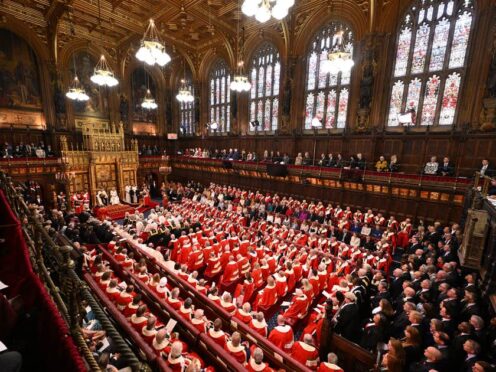Labour plans to axe all hereditary peers from the House of Lords, reports have suggested.
But the 92 hereditary lords who sit in Parliament’s upper chamber would still be allowed to retain their access to the Palace of Westminster as a sweetener, the Financial Times has reported.
This would allow them to still enjoy access to Parliament’s bars and subsidised restaurants.
Labour has previously vowed to abolish the unelected upper chamber of Parliament, with Sir Keir Starmer having branded it “undemocratic”.

Constitutional reforms championed by the party’s former prime minister Gordon Brown called for the Lords to be replaced with an elected chamber representative of the UK’s nations and regions, and won the backing of the current Labour leadership.
But in recent months the party has suggested it would delay its plans for reforming the upper chamber if it were elected to Government in order to prioritise other measures.
Now the party appears to have committed to some reform according to the FT, which reports Labour would act swiftly to remove the right of hereditary peers’ to sit in Lords.
The reforms, which it is understood are not finalised, would bring an end to the system of aristocratic families who have inherited their peerages holding elections among their numbers to join Parliament’s revising chamber.
Like all peers, the hereditary lords can claim a daily £342 attendance allowance.
There are more than 800 members of the House of Lords, with 92 seats set aside for hereditary peers since the last time the chamber faced reforms under the Blair government.
The number of hereditary peers who can sit in the Lords was limited in 1999, after Sir Tony trimmed more than 600 of their colleagues from the chamber.
The move could also be politically beneficial for Labour, as the majority of the hereditary peers, 47, are Conservative, while only four have the Labour whip.
A Labour spokesperson said: “Labour will abolish the House of Lords to ensure the UK’s second chamber better reflect our regions and nations. An incoming Labour government will inherit a mess and need to prioritise.
“The first term will take steps toward significant reform of the chamber.”
